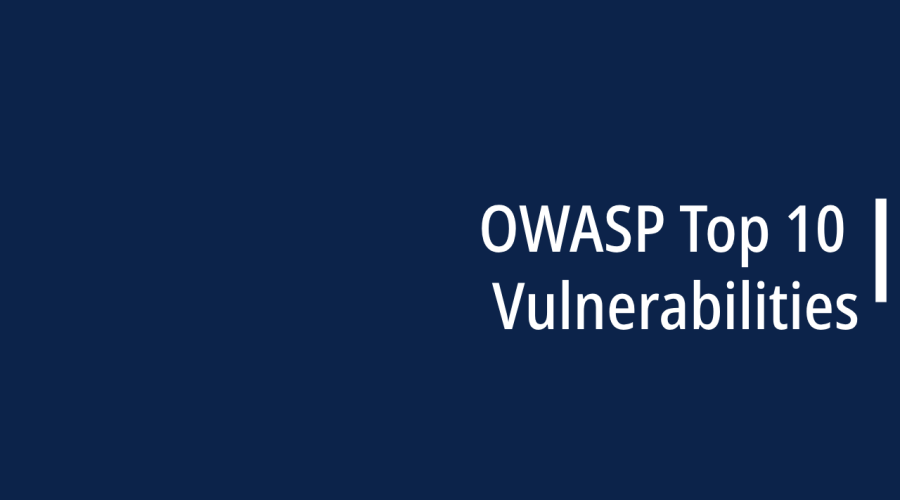OWASP stands for the Open Web Application Security Project. It’s a nonprofit organization focused on improving the security of software. One of OWASP’s key contributions to the field of cybersecurity is the OWASP Top 10. This list serves as a guide for understanding and addressing the most critical web application security risks. It’s an invaluable resource for developers, security professionals, and business leaders.
The OWASP Top 10 List
Let’s delve into the OWASP Top 10 vulnerabilities, understanding each one and its potential consequences.
1. Injection
Explanation: Injection vulnerabilities occur when untrusted data is sent to an interpreter as part of a command or query. The most common type is SQL injection, where attackers manipulate input fields to gain unauthorized access to a database.
Consequences: Successful attacks can result in data breaches, unauthorized access, and data loss.
2. Broken Authentication
Explanation: Broken authentication vulnerabilities arise when inadequate security measures allow attackers to compromise user accounts. This can include weak password policies, insecure session management, or flawed multi-factor authentication.
Consequences: Attackers can gain unauthorized access to user accounts, leading to identity theft and unauthorized actions.
3. Sensitive Data Exposure
Explanation: Sensitive Data Exposure occurs when an application doesn’t properly protect sensitive information like credit card numbers or personal data. Attackers can exploit this vulnerability to steal such information.
Consequences: Data breaches, loss of customer trust, legal repercussions, and financial losses are common outcomes.
4. XML External Entities (XXE)
Explanation: XXE vulnerabilities arise when an application processes XML input without proper validation. Attackers can use malicious XML entities to execute arbitrary code and potentially access sensitive data.
Consequences: Unauthorized data access, denial of service, and system compromise are possible outcomes.
5. Broken Access Control
Explanation: Broken Access Control vulnerabilities occur when an application fails to enforce access controls properly. This allows attackers to gain unauthorized access to data or functionality.
Consequences: Unauthorized data access, data manipulation, and privacy breaches can result from this vulnerability.
6. Security Misconfiguration
Explanation: Security Misconfiguration vulnerabilities result from improper configuration of security settings, such as default credentials, unnecessary services, or excessive permissions.
Consequences: These vulnerabilities can lead to unauthorized access, data exposure, and system compromise.
7. Cross-Site Scripting (XSS)
Explanation: XSS vulnerabilities occur when an application allows malicious scripts to be injected into web pages viewed by other users. This can lead to session hijacking or defacement of websites.
Consequences: Theft of sensitive data, defacement of websites, and malicious actions on behalf of authenticated users are potential outcomes.
8. Insecure Deserialization
Explanation: Insecure Deserialization vulnerabilities happen when an application improperly handles serialized data, allowing attackers to execute arbitrary code.
Consequences: Attackers can gain control of the application, leading to data breaches or denial of service.
9. Using Components with Known Vulnerabilities
Explanation: This vulnerability arises when an application includes outdated or vulnerable components, such as libraries or frameworks.
Consequences: Attackers can exploit these known vulnerabilities to compromise the application.
10. Insufficient Logging and Monitoring
Explanation: Insufficient Logging and Monitoring vulnerabilities occur when an application doesn’t adequately log security events or lacks the capability to detect and respond to suspicious activities.
Consequences: Attackers can operate undetected, leading to extended breaches and data exfiltration.
Mitigating OWASP Top 10 Vulnerabilities
Addressing these vulnerabilities is crucial for safeguarding your applications and data. Here are some key strategies:
Code Review and Testing: Regularly review and test your code for vulnerabilities, employing automated scanning tools and manual testing.
Patch Management: Keep software, libraries, and frameworks up to date to address known vulnerabilities.
Access Control: Implement strong access controls and authentication mechanisms to prevent unauthorized access.
Data Encryption: Encrypt sensitive data, both in transit and at rest, to protect it from exposure.
Security Training: Train your development and operations teams in secure coding practices and security awareness.
Security Headers: Use security headers like Content Security Policy (CSP) and HTTP Strict Transport Security (HSTS) to bolster your application’s security.
The Role of Web Application Firewalls (WAFs)
A Web Application Firewall (WAF) can provide an additional layer of protection against OWASP Top 10 vulnerabilities. It can detect and block malicious traffic, mitigating the risk of attacks. Properly configuring and maintaining a WAF is essential for its effectiveness.
Continuous Monitoring and Reporting
Security is an ongoing process. Regularly monitor your applications for security incidents and generate reports to track and address vulnerabilities effectively.
Educating Your Team
Finally, remember that cybersecurity is a team effort. Ensure that your entire organization, from developers to executives, understands the importance of security and is actively engaged in safeguarding your digital assets.
Conclusion
By understanding and mitigating the OWASP Top 10 vulnerabilities, you can significantly enhance your organization’s cybersecurity posture. It’s crucial to stay informed about emerging threats and continuously improve your security measures to adapt to the ever-evolving digital landscape. OWASP’s guidance is an invaluable resource in this ongoing effort to protect your digital assets and sensitive data from malicious actors.

Gloria Bradford is a renowned expert in the field of encryption, widely recognized for her pioneering work in safeguarding digital information and communication. With a career spanning over two decades, she has played a pivotal role in shaping the landscape of cybersecurity and data protection.
Throughout her illustrious career, Gloria has occupied key roles in both private industry and government agencies. Her expertise has been instrumental in developing state-of-the-art encryption and code signing technologies that have fortified digital fortresses against the relentless tide of cyber threats.
